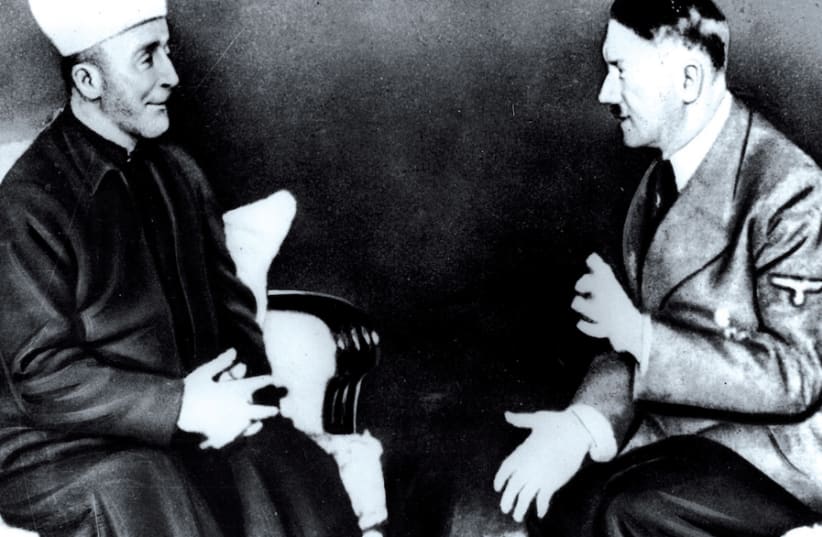Since the terrorist events of October 7, 2023, carried out by the Hamas militia, the world has been experiencing an unprecedented wave of polarization. The repercussions and consequences of these events have reached alarming levels in some countries, making it feel as if these nations have geographically relocated to the Middle East.
In light of what is happening, I feel a moral obligation to reveal all that is hidden and unspoken regarding the Arab-Israeli conflict. I plan to do this through a series of articles, hoping that some might change their positions and perspectives when they learn of the many hidden facts obscured behind the smoke screens launched by Islamic movements allied with leftist parties and organizations (to conceal the truth and information).
I will go back in time, starting from July 8, 1937, when the Peel Commission Report was published.
Officially known as the British Royal Commission, it was a high-level royal investigative committee chaired by Earl Peel, a member of the UK Privy Council and former British Secretary of State for India.
The commission was formed in 1936 following the outbreak of the Arab revolt in the conflict zone. Its mission was to devise a final solution to the "Arab-Jewish" conflict.
The committee's work concluded with a proposal to establish three regions: a British-mandated territory including Jerusalem, Bethlehem, and a corridor to Jaffa on the Mediterranean coast; a Jewish state in Galilee, with part of the western coastline; and the largest portion of the land to merge with East Jordan to form an Arab state. (It is very important to note that the proposed area for the Arab state was close to 25,000 square kilometers, while the proposed area for the Jewish state was around 2,500 square kilometers. Despite the historical right of the Jews to the land, they accepted the committee's proposals, confirming their desire to live in peace and end the conflict.)
Golda Meir wrote in her memoirs that she was sitting with David Ben-Gurion when they learned of "the committee's proposals." Together, they went to consult with Chaim Weizmann to get his opinion and reach a decision. Weizmann told them, "A state is better than no state, and agreeing is better than refusing, and we hope the Arab side rejects it."
Arabs refused to live in peace
Indeed, this is exactly what happened: the Arabs refused to live in peace alongside the Jews.
Years later, there was the involvement of the Arab spearhead, Amin al-Husseini (the Grand Mufti of Jerusalem and head of the Supreme Muslim Council), in the "Final Solution," the Nazi plan to exterminate all Jews in Europe.
Al-Husseini arrived in the German capital, Berlin, in the second week of November 1941. He had come from Italy, where he had met with Mussolini, Germany's strong ally.
On November 28 of the same year, Hitler received al-Husseini at the Reich Chancellery, describing him as "the Grand Mufti of Jerusalem and one of the most influential men in the Arab liberation movement."
Before he met with Hitler, al-Husseini met with Joachim von Ribbentrop, one of the Nazi regime's leaders in Germany. Days later, al-Husseini was personally escorted on a tour to observe the genocide in the gas chambers at Auschwitz alongside Adolf Eichmann.
Al-Husseini commented on the visit, saying that there was consensus between them and that Hitler told him, "The Jewish problem should be solved step by step."
Al-Husseini received a promise that once the Middle East was occupied, "Germany's sole goal would be the extermination of the Jewish element residing in the Arab region under British protection." Al-Husseini's visit to Germany was engineered by his Lebanese secretary, Othman Kamal al-Haddad.
It is important to highlight a crucial point: all proposed solutions were always rejected by the Arab side, and the idea of two states, one Arab and one Jewish, was consistently discussed.
This confirms that there was never a state called Palestine in any historical period. The Partition Plan itself, issued by the UN General Assembly under Resolution 181 on November 29, 1947, stipulated two states, one Arab and one Jewish. If the Palestinian state existed, why was it not explicitly included in the resolution?
The Arabs' rejection of the Partition Plan "at that time" and the actions of Amin al-Husseini, "the head of the Supreme Muslim Council," in his quest "to eliminate the Jews from the face of the earth" all align with the mentality that still persists today.
This mindset continues to reside in the minds of Yahya Sinwar, Hassan Nasrallah, Abdul Malik al-Houthi, and all the leaders of the Muslim Brotherhood, as well as the destructive arms of Iran in the Middle East, such as Hamas, Hezbollah, Islamic Jihad, and the Houthis.
These Islamic terrorist organizations and movements share the same approach, driven by ideologies of hatred and hostility towards others. They embrace the delusions and hallucinations of global supremacy and the establishment of a supposed caliphate state.
Mohamed Saad Khiralla is a political analyst specializing in Middle East affairs and Islamic movements, an opinion writer, and a member of the Swedish PEN Association.

